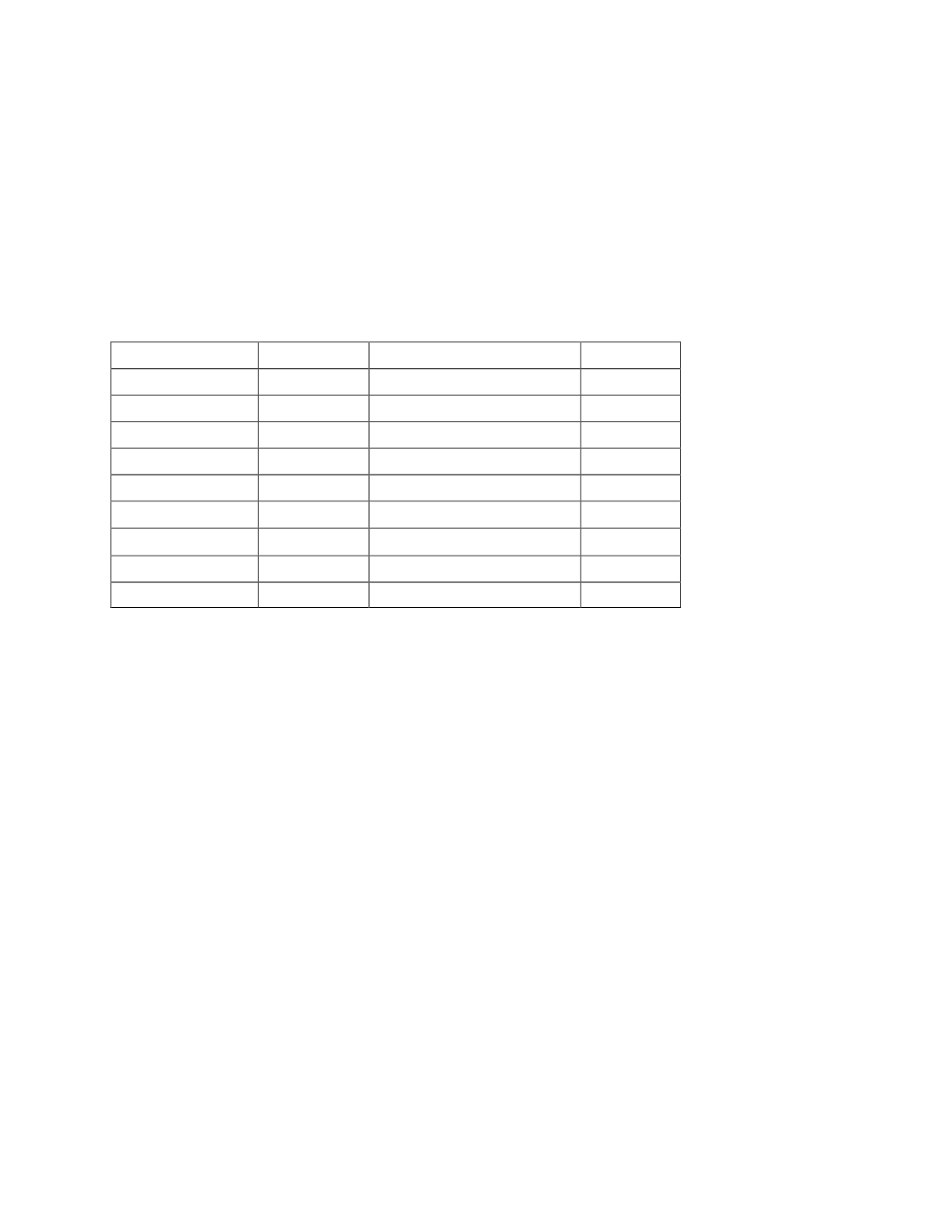

Ref. No. [UMCES] CBL 2016-012
ACT VS16-03
25
Individual response slopes and intercepts of instrument measurement versus reference DO
for each of the laboratory trials at a fixed temperature and salinity level are summarized in Table 4.
The response curves of the SBS HydroCAT exhibited increased slopes and more negative
intercepts over the 5-15-30
o
C trials. Again there was no consistent trend across the salinity trials.
Table 4.
Summary of regression statistics for the SBS 37 HydroCAT versus reference sample response
curves for each of the nine laboratory trials.
Test ID
R2
y Intercept
Slope
LT15S00
1.000
0.006
0.997
LT15S10
0.999
0.004
0.992
LT15S35
0.999
-0.016
0.997
LT04S00
1.000
0.074
0.987
LT04S10
0.999
0.135
0.972
LT04S35
1.000
0.074
0.975
LT30S00
0.999
-0.045
1.025
LT30S10
0.999
-0.027
1.030
LT30S35
0.999
-0.027
1.038
Results of the 56 day long-term stability and thermal stress challenge for the SBS
HydroCAT are shown in figure K. The instrument was maintained in a well circulated tank and
oxygen content manipulated by alternately varying water temperature set point between 15 and
25
o
C several times per week of deployment. The time series of instrument readings at 15min
intervals is plotted against discrete values for Winkler reference samples (
top panel
) along with the
time series of the difference between instrument and reference measurements (
bottom panel
). The
overall mean difference between measurements was -0.018 (s.d. = 0.298) mg/L for 156
comparisons (out of a potential total of 156). There was minimal change in accuracy over time
during the 56 day test. If the outliers near the end of the test are omitted, a linear regression of the
differences over time yielded a slope of -0.005 mg/L/d (r
2
= 0.082; p=0.0002). For all data, the
slope increased slightly to -0.004 mg/L/d (r
2
= 0.049; p=0.006).
The manufacturer declined from having the SBS HydroCAT evaluated for response time
test as designed in the Verification Protocols, so no results are available.
















